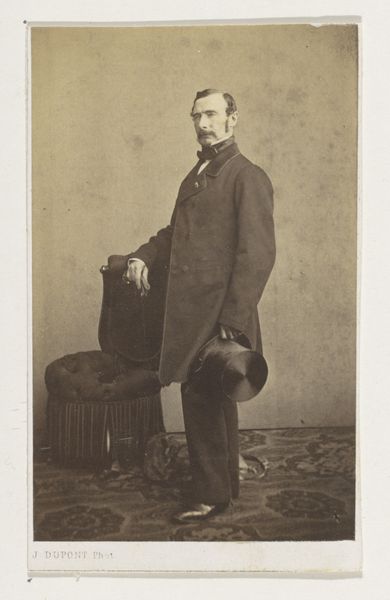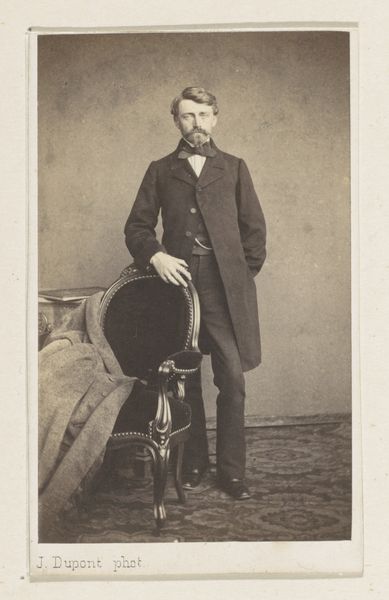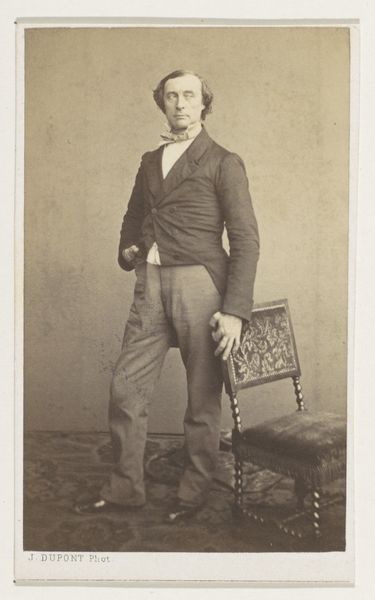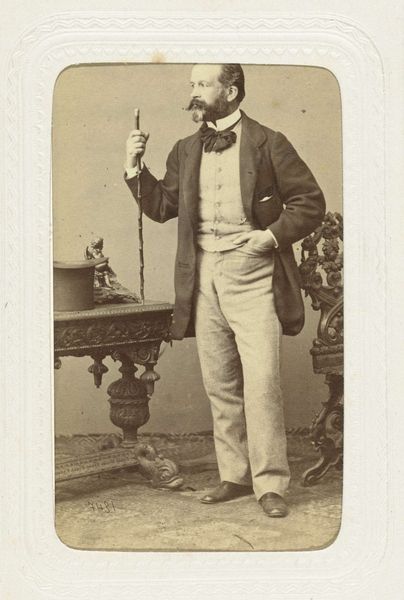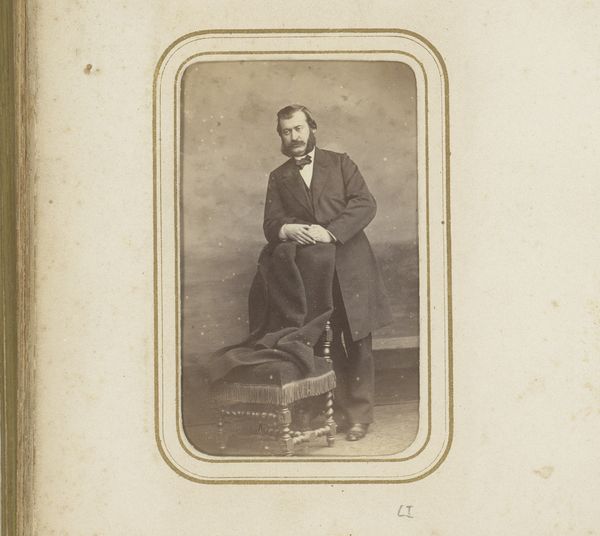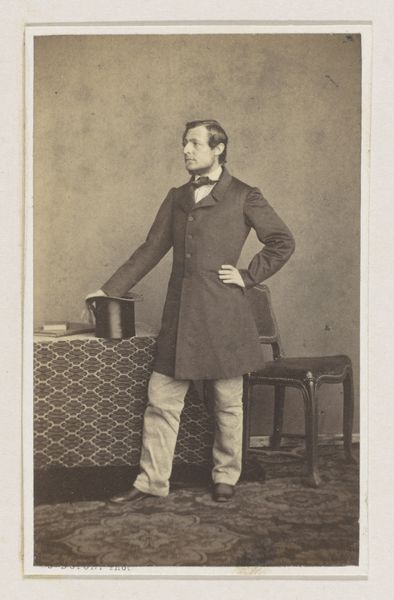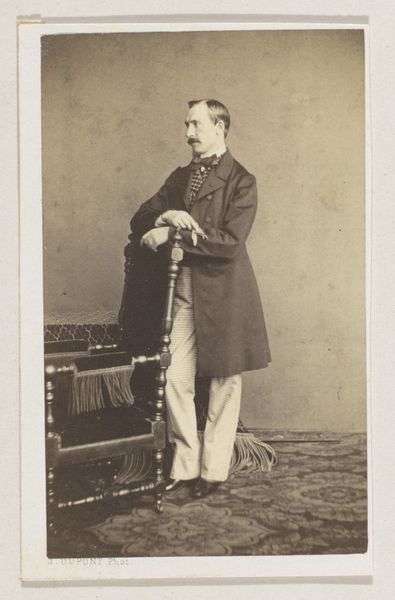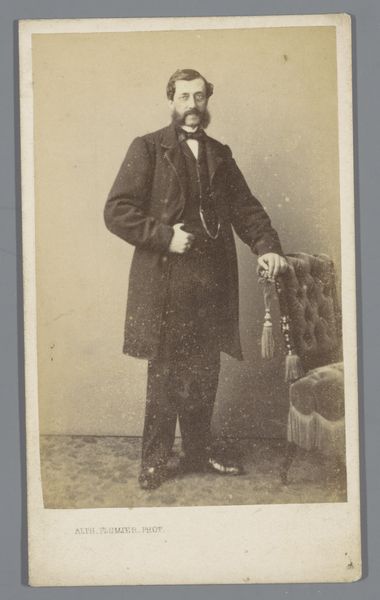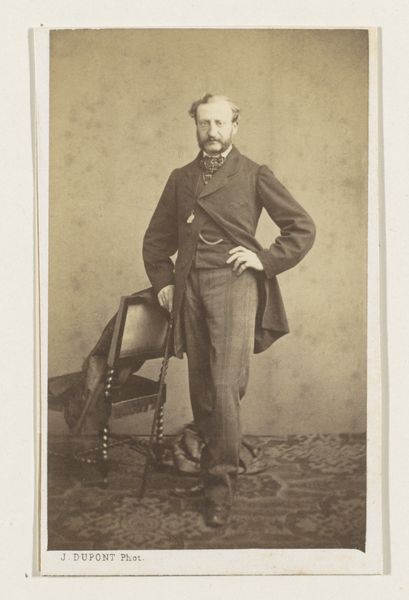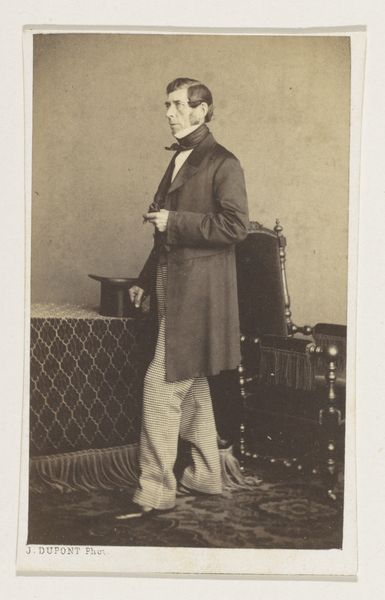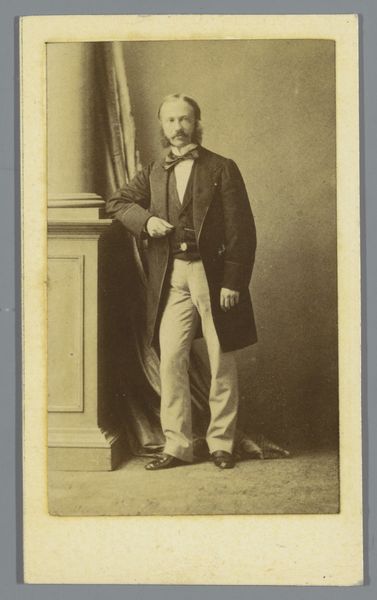
photography, gelatin-silver-print
#
portrait
#
photography
#
gelatin-silver-print
#
academic-art
#
realism
Dimensions: height 101 mm, width 62 mm
Copyright: Rijks Museum: Open Domain
Editor: This is a photograph from 1861 by Joseph Dupont, titled "Portrait of the painter and sculptor Jules Pecher, full length." It's a gelatin silver print. The subject's formal attire gives the photograph a somber, almost self-important air, don’t you think? What significance do you glean from the imagery presented here? Curator: Absolutely. Consider the chair, almost a throne, that Pecher leans on. What does that suggest about status, about the aspirations of artists in that era? Notice how it’s staged; the composition aims to depict him not merely as an individual, but as a representative of artistic achievement. Editor: That makes sense. The way he is positioned does seem very deliberate, as if trying to convey his authority in the arts. But beyond just showing status, could there be something about how artists at the time viewed themselves? Curator: Precisely! The symbols embedded here reflect cultural values; the artist desired to be viewed as a gentleman, a scholar. Consider the dark jacket contrasted with the white trousers – is there a kind of purity implied by that sartorial choice? Dupont isn't just taking a picture, he's creating an iconographic representation. How do you feel that links with contemporary portraiture? Editor: Hmm, I hadn't considered that detail, but that’s a good point! Modern portraiture often seeks to reveal more about personality. But this seems to aim for something else - constructing a very particular image. He wants to be seen in this pre-determined way, almost like an archetype. Curator: Yes, and it shows the power of early photography to shape public perception, build a lasting legacy. Editor: I definitely have a new perspective now! Thank you, it all feels more layered. Curator: Indeed, seeing how we shape the image of ourselves! It is an exploration into selfhood and cultural memory.
Comments
No comments
Be the first to comment and join the conversation on the ultimate creative platform.
